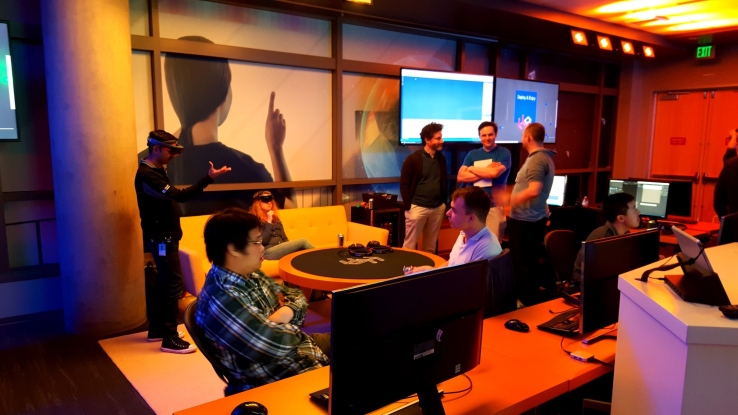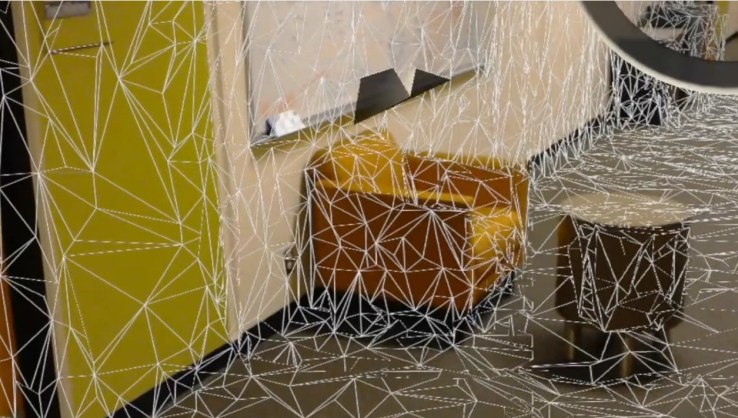

It’s just about impossible to get your hands on Microsoft’s impressive mixed-reality HoloLens platform these days — unless you’re a computer science student at the University of Washington. Then you get to play with them whenever you want.
At least that’s the case for the students in CSE 481V, in which, according to the course description, you will “learn a ton about Virtual and Augmented Reality, get familiar with the latest technology and software, and build an app in 10 weeks.”
This is the first time the course has been offered in this fashion, with generous underwriting by local VR/AR players Microsoft, Oculus and Valve/HTC. The 36 students in the course had access to the HoloLens dev team and all the major headsets — there were 25 HoloLenses involved, which is probably more than have ever been in one place. Students also got to hear from guest speakers like Oculus Chief Scientist Michael Abrash and author Neal Stephenson — whose “Snow Crash” was required reading for the course.
All in all, it’s enough to make a guy want to matriculate.

One of the projects had users flying a virtual paper airplane through AR waypoints.
“We pitched the idea of a VR/AR class last year to HoloLens leadership and they immediately got excited and were eager to make it happen,” wrote Steve Seitz, one of the class’s instructors. “I was initially quite worried about the idea of relying on a brand new device and development platform for a 36 person class. But I’m extremely impressed with the development environment… it was good enough that students with no prior experience could get up and running quickly and make some really compelling applications in just a few weeks.”
You can see what those applications were at the course webpage, complete with weekly blog posts showing progress from concept to execution. There’s augmented reality cooking, a painting app and the clever idea of gamifying the process of scanning a room so it can be used in other apps.
The class culminated in a sort of open demo day at the UW campus, where students could show off their work to the general public and serious players like Microsoft Research’s CVP Peter Lee.
It’s a great opportunity for students, no doubt, but also a fertile testing ground for the companies in the space. How did these fresh young minds interact with the technologies? What did they run up against? What tools did they wish they had? This kind of extensive focus testing is always valuable, not to say this was an ulterior motive, just that it was no doubt a fruitful collaboration.

Students and guests mingle at the capstone project presentation day.
“For the HoloLens team, this was an opportunity to evaluate the platform in a focused educational settings, and get early feedback,” wrote Seitz. The team also provided technical support and training.
Seitz and the class’s other instructor, Ira Kemelmacher-Shlizerman, aim to offer the class again next year. UW is, of course, a convenient location for Microsoft to work with, but the institution is also a hub for research in this area, having pioneered many VR and AR ideas early on in its famous HITLab.
Featured Image: University of Washington

